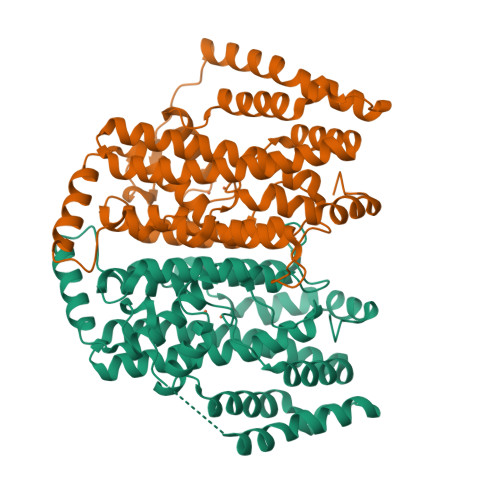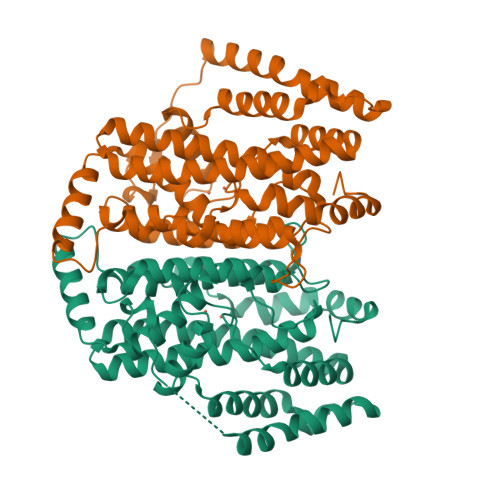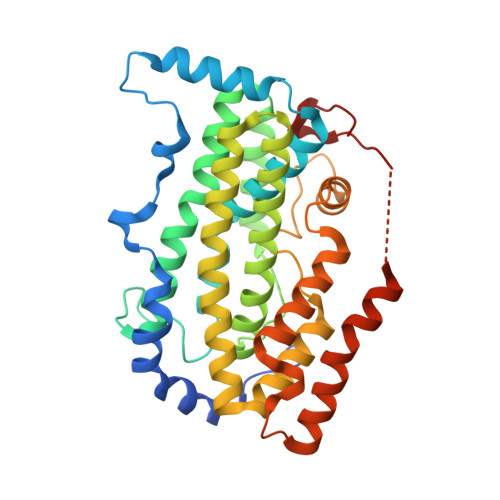Divergent evolution of extreme production of variant plant monounsaturated fatty acids.
Gan, L., Park, K., Chai, J., Updike, E.M., Kim, H., Voshall, A., Behera, S., Yu, X.H., Cai, Y., Zhang, C., Wilson, M.A., Mower, J.P., Moriyama, E.N., Zhang, C., Kaewsuwan, S., Liu, Q., Shanklin, J., Cahoon, E.B.(2022) Proc Natl Acad Sci U S A 119: e2201160119-e2201160119
- PubMed: 35867834
- DOI: https://doi.org/10.1073/pnas.2201160119
- Primary Citation of Related Structures:
7T63 - PubMed Abstract:
Metabolic extremes provide opportunities to understand enzymatic and metabolic plasticity and biotechnological tools for novel biomaterial production. We discovered that seed oils of many Thunbergia species contain up to 92% of the unusual monounsaturated petroselinic acid (18:1Δ6), one of the highest reported levels for a single fatty acid in plants. Supporting the biosynthetic origin of petroselinic acid, we identified a Δ6-stearoyl-acyl carrier protein (18:0-ACP) desaturase from Thunbergia laurifolia , closely related to a previously identified Δ6-palmitoyl-ACP desaturase that produces sapienic acid (16:1Δ6)-rich oils in Thunbergia alata seeds. Guided by a T. laurifolia desaturase crystal structure obtained in this study, enzyme mutagenesis identified key amino acids for functional divergence of Δ6 desaturases from the archetypal Δ9-18:0-ACP desaturase and mutations that result in nonnative enzyme regiospecificity. Furthermore, we demonstrate the utility of the T. laurifolia desaturase for the production of unusual monounsaturated fatty acids in engineered plant and bacterial hosts. Through stepwise metabolic engineering, we provide evidence that divergent evolution of extreme petroselinic acid and sapienic acid production arises from biosynthetic and metabolic functional specialization and enhanced expression of specific enzymes to accommodate metabolism of atypical substrates.
Organizational Affiliation:
US Department of Energy Center for Advanced Bioenergy and Bioproducts Innovation, University of Nebraska-Lincoln, Lincoln, NE 68588.



















